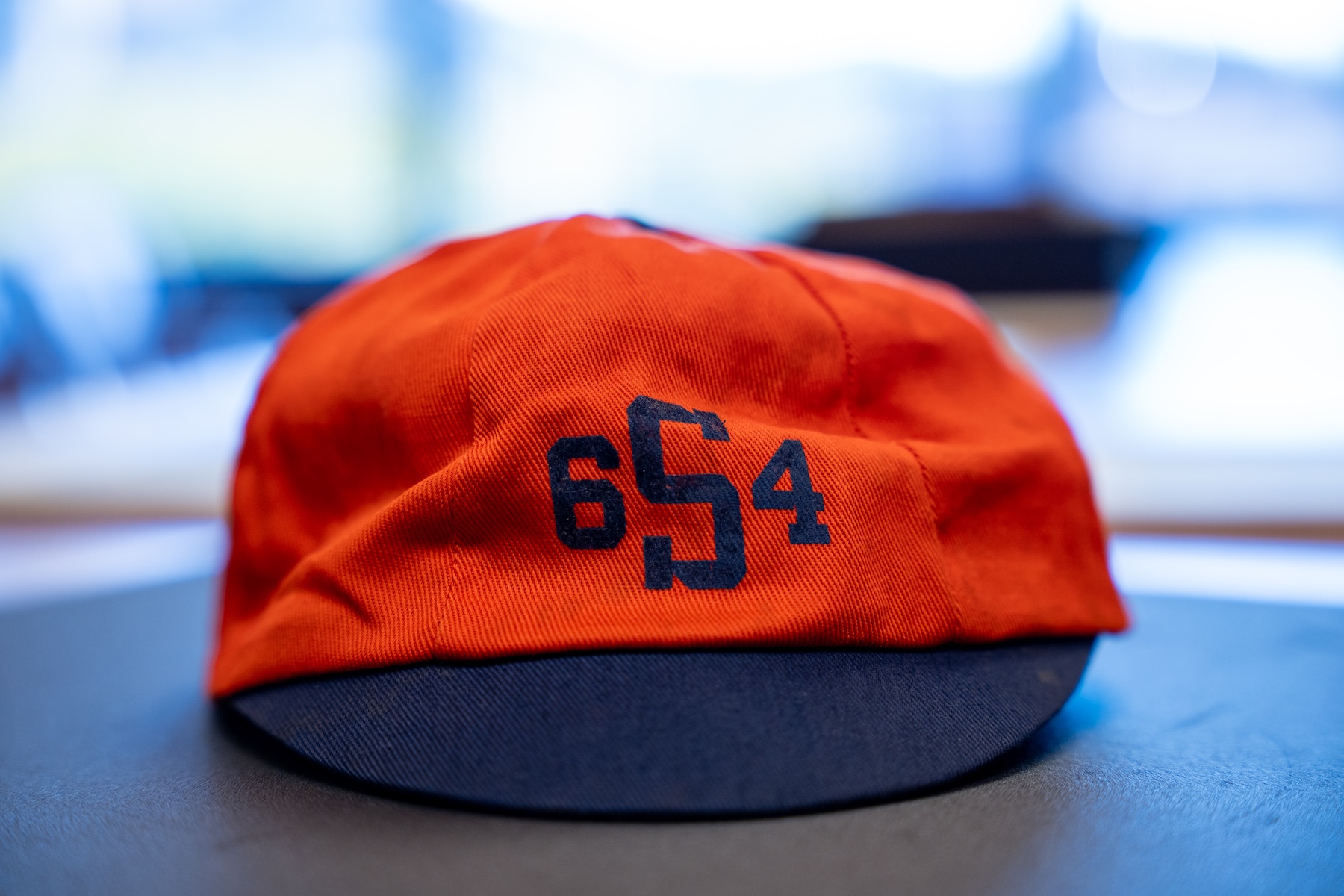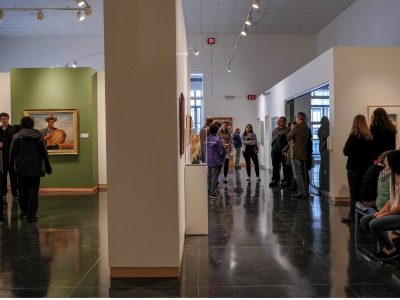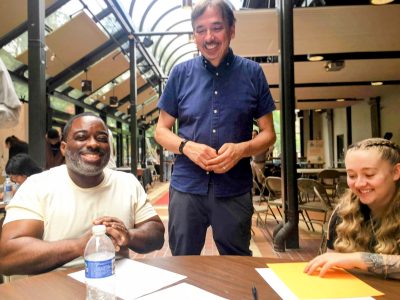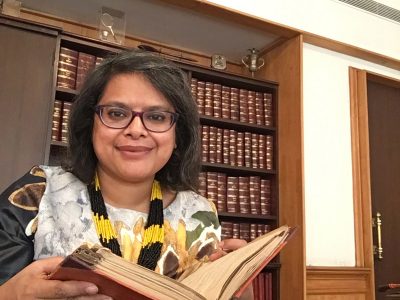Rare Marching Band Uniform Will Be Displayed During Orange Central
Nearly a century ago, Edward Joseph Rimkunas ’40 donned a blue and orange uniform to lead the Syracuse University Marching Band. Now, decades later, the uniform is returning to the public eye, displayed for the first time by the University Archives during Orange Central.
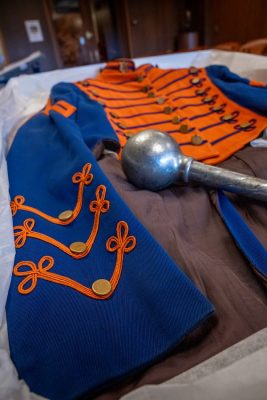
The uniform—which consists of a jacket, pants and drum major baton—is a recent acquisition by the archives, which is part of the Special Collections Research Center in the Syracuse University Libraries. And while the repository has other marching band uniforms, the one that belonged to Rimkunas is the oldest in the archives’ collection. He wore it during his junior and senior years, around 1938 to 1940, and it was donated in the last year by his grandson.
Despite the passage of time, the uniform’s detailed stitching and vibrant colors remain.
University archivist Meg Mason says she’s excited to bring the uniform to Orange Central, which runs Friday, Oct. 17, through Sunday, Oct. 19.
“It’s a beautiful piece, and it’s in such wonderful condition,” she says.
According to the archives, Rimkunas was born in Hoosick Falls, New York, and was the leader of his high school band. At Syracuse, he played trumpet in the University Marching Band before being promoted to drum major. He also served in the Reserve Officers’ Training Corp (ROTC) and was a member of the ROTC honorary society, Pershing Rifles.
A business administration major, he graduated in 1940 from the University with a bachelor of science. He changed his last name to “Richards” after leaving campus, and in 1948, he founded Richards Insurance, now known as The Richards Group, according to the archives. He died in 1994.
A 1940 University yearbook mentions Rimkunas “strutting down the field in front of the band.” An accompanying photo captures the jubilant drum major, his head thrown back and his knee up in a high step, toe pointed down to the ground.
“Besides photographs and newspaper clippings, there aren’t many materials that document the marching band from the late 1930s to early 1940s,” Mason says. “So it’s really special to not only have the uniform with all its brass buttons, but also to connect it to a specific student. This item documents not only something about the history of the marching band but also the experience of a student at Syracuse University.”
The uniform will be displayed during Orange Central in room 304ABC of the Schine Student Center at the archives’ table, where alumni can see other historical memorabilia and materials and learn about the current exhibition on campus buildings in the Special Collections Research Center.
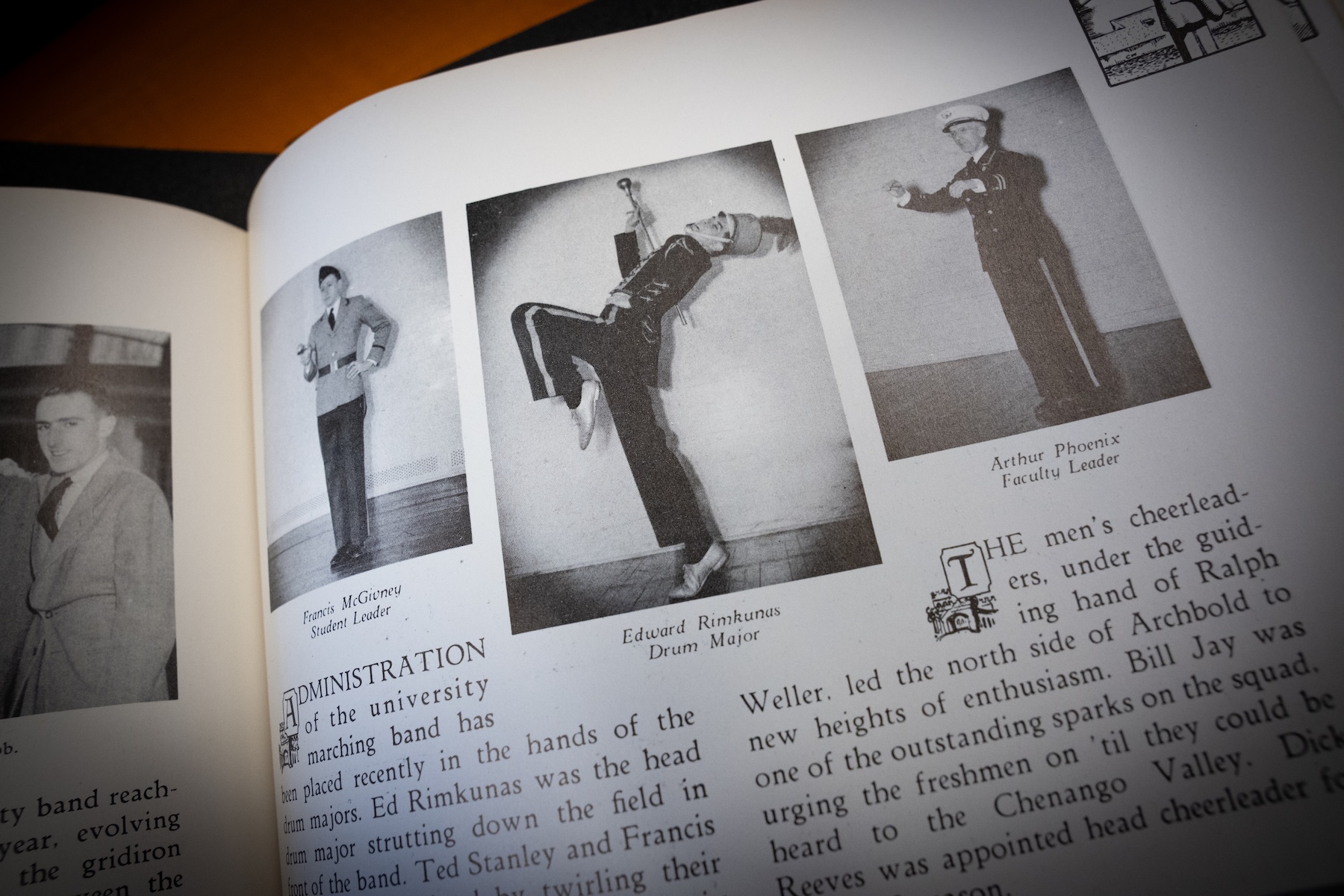
Mason says the University Archives tables at campus events like Orange Central for “lots of different reasons.”
“First, we want alumni to be aware that the University Archives exists—that documenting the history of SU, which is also their history—is important,” she says. “Additionally, I hope to inspire curiosity about SU history. If alumni know about us and what a valuable resource we are to the University and to them, as well as how we use our collection material for research, instruction and exhibitions, then they may be inclined to donate something of their own that documents their time on campus.”
Mason had one such interaction with an alum last year, tabling at the Senior Alumni Reunion, where the archives typically does a large pop-up exhibition. The University Archives has a “substantial number” of freshman beanies—the caps first-year students were expected to wear most of the year, from about the late 19th century to about 1970—in the archives’ Memorabilia Collection.
“The Goon Squad was originally established to enforce this, they were not as helpful as they are now,” Mason says. “Upperclassmen could tell first-year students to tip your hat and they would have to tip their hat out of respect. It put them in their place, but also, it was a great way for other freshmen to find each other. So they knew they weren’t alone.”
Last year, Mason put out a Class of 1963 beanie at the reunion’s pop-up exhibition. An alum from the Class of 1964 came up to the table and asked why there was no cap for her year.
“I was like, ‘We don’t have one,’” Mason said. “And she said, ‘Do you want one?’”
The alumna later sent a ’64 beanie to the archives.
Interactions like those are how the archives often gets donations from alumni, Mason says, but she added that it is also just enjoyable to showcase fun items from the collection during campus events.
“The table or a pop-up exhibition encourages alumni to relive a bit of their past here, and it often generates conversation between staff and alumni, who share their own memories of being students on campus,” she says. “I often learn from them about University history, and I often take notes!”
If a former student or their family has an item related to their time at the University they are interested in donating, they are encouraged to reach out to the Special Collections Research Center by emailing scrc@syr.edu.
